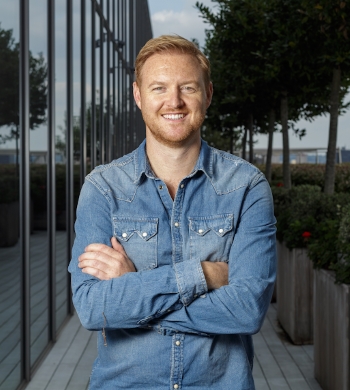Can destination-based marketing guide the route to more informed ads?
- Monday, July 22nd, 2019
- Share this article:
Finlay Clark, UK country manager at Waze, discusses how destination marketing takes location-based marketing to the next level
 Location-based marketing has been a popular alternative to click-capturing tracking for several years, enabling brands to notify consumers of their presence whenever they’re in close proximity. While it offers a more personalised approach than remarketing based on an occasional website visit, there are often issues with data accuracy. Walking past a shop doesn’t indicate an individual’s mindset and there’s very little context about how the message will be received.
Location-based marketing has been a popular alternative to click-capturing tracking for several years, enabling brands to notify consumers of their presence whenever they’re in close proximity. While it offers a more personalised approach than remarketing based on an occasional website visit, there are often issues with data accuracy. Walking past a shop doesn’t indicate an individual’s mindset and there’s very little context about how the message will be received.
A lot of location marketing focuses on where someone is rather than where they’re headed. At Waze, we’re in a unique position because we don’t just understand their whereabouts, we have a pretty good understanding of why they’re in the car, depending on when they’re using the app. We were one of the first brands to pioneer destination marketing – targeting consumers on their travels – because our app is used for getting people from A to B and any stops they might make along the way. We have context of the journey motorists are taking, which gives us a deeper understanding of drivers and means we can deliver helpful, informed adverts.
Location-based marketing used innovations introduced by the smartphone to deliver context based on location, time of day, the weather and events that may or may not be happening – all of which were relatively static to specific geo-tags. Nowadays though, we’ve found that people are on the move more than ever, so it’s increasingly difficult for brands to find meaningful moments of connection.
The data evolution has inspired a drive for measurability in today’s marketing departments, and advertisers are more concerned about results than ever before. Previously, drivetime adverts relied on motorists tuning into the radio or noticing a billboard outside their car window, but there was no direct way of tracking whether the message had truly been received and acted upon. Thanks to the introduction of real-time data, we’re now able to detect the services people are most in need of based on the time of day that they’re driving and where they’re going.
McDonalds was one of the first brands to connect the dots between the two – by connecting its out-of-home geofenced billboards to in-app advertising on Waze in 2018. Using more than 300 billboards in South California, the fast-food brand served Waze users menu promotions any time their car stopped for several seconds. The Waze ads reflected the content shown on the billboard and resulted in more than 8,400 navigations, which McDonald’s was able to monitor through our measurable channel.
Peugeot followed a similar initiative by coupling traditional outdoor media with Waze adverts in France. By geofencing more than 100 of their billboard locations, Peugeot delivered takeover adverts on Waze to those passing by the billboard faces, dropping location pins and searches into the app for nearby dealerships. The out-of-home and in-car combination worked again, increasing navigations to their car dealerships by 10 per cent.
As these examples show, we’re in a unique position for understanding consumer behaviour.
It’s important to also consider that commutes are getting longer. The average Waze user has a 46-minute journey to work every day. Two thirds of the UK workforce don’t know what they’re having for dinner every night and they’re most likely to decide on the way home, so that’s where a Marks & Spencer advert might be genuinely helpful. We also know that Friday evenings are one of the most popular times to fill your car up with petrol for the weekend, so a Shell logo might appear while drivers are heading home.
When it comes to holidays, 58 per cent of adults are opting for a staycation holiday and spending even more time in the car. People are away from their local supermarkets in an unfamiliar area, so they’ll need suggestions of where to buy their groceries. Largely, most apps that serve adverts, whether retail or social media, can only discern elements of your journey. However, advertisers that consider these moments, where consumers are most in need of bespoke content, stand a higher chance of being noticed by their audience and driving shares during peak moments in the car.
Even the most breaking technology lends itself to destination-marketing and we see the future being led by voice activations within the car interface. A good example is Amazon’s Echo Auto, which received 1m pre-orders when it was first announced as a revolutionary, affordable in-car assistant.
Its been said by Apple that the car is the ultimate mobile device but its telling how often the technology is antiquated and the UI significantly clunky, compared to the experiences we expect on our smartphones. Through integrations with Google Assistant and Siri incoming later this year, we’re able to essentially upgrade the in-car experience. People can use their mobiles to safely make requests for cheaper fuel or a destination change without fiddling with their touchscreen.
Reaching people on the go has been a cornerstone of the advertising industry over many decades. While mobile has allowed advertisers a new set of tools to make this work, often theres a very narrow use case of how location is applied or measured. As the industry continues to evolve – and we can connect smartphone or in-car experiences more intuitively with the outside world – the opportunities for groundbreaking services, stand-out advertising and real-world insights around consumer behaviour will increase dramatically.

















